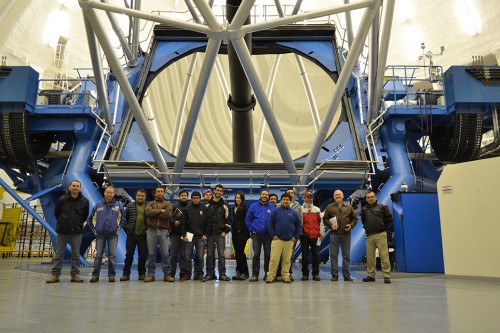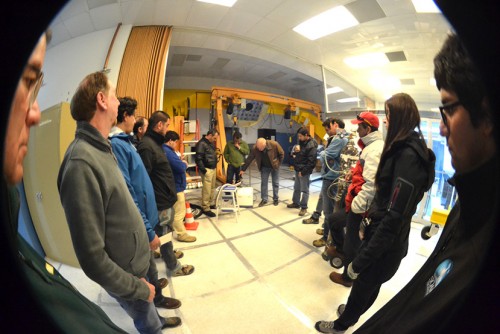- Date: 7 Dec 2015
- Comments: (0)
- Categories: For Everyone

Staff from CTIO, SOAR and Gemini participated in a shared training session on vacuum technology during November.
The coating of a state-of-the art primary mirror is a complex process that requires specialists from several areas, with sufficient training and knowledge. This was demonstrated in October 2015 when the Gemini primary mirror (M1) was successfully recoated by a combined team of specialists from Gemini, the Cerro Tololo Inter-american Observatory (CTIO) and the Southern Astrophysical Research (SOAR) Telescope
In order to keep observatory staff up-to-date on vacuum coating technologies, last week a classroom training session on vacuum technology brought together staff from all of the telescopes of the Association of Universities for Research in Astronomy (AURA) in Chile
Specialists from Intercovamex, a Mexican company that specializes in vacuum technology and training, provided insights into all important aspects of vacuum technology and tailored the training to observatory needs.

The training included theoretical sessions at the Gemini South Base Facility, and the final part of the training took place at the telescope to look at specific observatory equipment.
Most of the instruments that Gemini and other AURA telescopes use utilize vacuum chambers to cool down detectors, increase their sensitivity, and reduce background noise. With vacuum technology so pervasive, from instruments to optical coatings, the importance of this training is critical.
The Gemini South Head of Engineering Operations, Michiel Van Der Hoeven comments, “hopefully this shared training initiative will further enhance our knowledge on these systems, enable further collaboration and open up new opportunities for all”.





